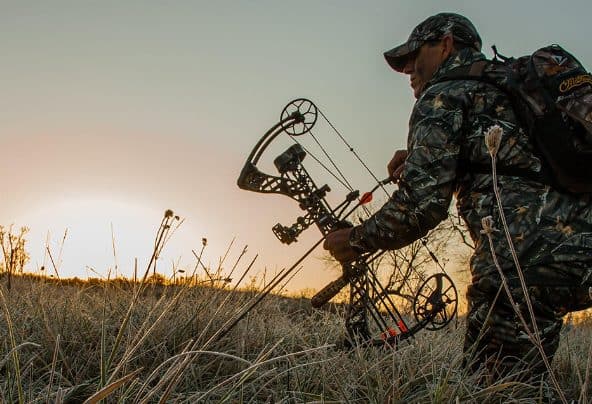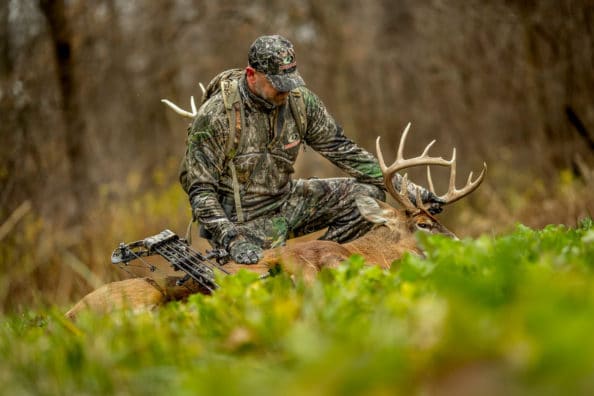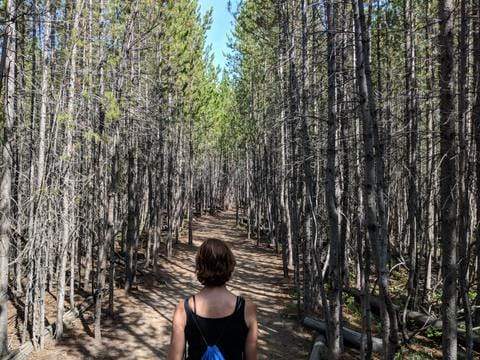Which Food Plot Crops Do Deer Prefer and Why
“What is the best thing to plant in my food plot?”
Have you ever asked this question? As University Extension professionals and wildlife scientists, we get asked that question a lot. The search for the “magic bullet” plant has yielded many great discussions, but despite deer diets being heavily studied by researchers and observed by hunters, the answer has never been clear. You have probably heard deer hunters argue which forage is best to plant, or even that deer like to eat a certain species of plant on one property but avoid it on another. Could both statements be right? Or wrong? The crux of all of this discussion lies with how deer decide what to eat and why.
In a collaboration between the Mississippi State University (MSU) Deer Lab and the University of Florida D.E.E.R. Lab, we brought some clarity to this issue by evaluating how nutrients influence which plants deer prefer to eat, and what that could tell us about choosing the best food plot forages and habitat management in general.
Failure to consider that deer need much more than just protein may obscure our understanding of what is actually going on.
Which plants deer prefer to eat and why has long been debated in science. The best hypothesis to explain diet selection so far was based on decades of research with cattle, sheep and goats. It has been demonstrated that animals select plants based on their daily and seasonally fluctuating nutritional requirements. Sounds simple, right? The tricky thing is that animals need to balance the intake of nutrients so they avoid toxic amounts of any one nutrient while still meeting the requirements of all other nutrients.
Most of what you have learned about deer forage preferences probably involves some form of protein as the currency for ranking forage quality. In fact, few studies have considered more than three or four nutrients at a time when trying to understand why deer choose to eat what and when. What’s more, nutritional requirements may vary from deer to deer just like with humans. And, requirements vary greatly based on life stage events: antler growth of yearlings verses mature bucks, or between antler growth and the rut; or early pregnancy vs. lactation stages for adult does. Failure to consider that deer need much more than just protein may obscure our understanding of what is actually going on. We designed an experiment to consider a wide array of nutrients in a wild deer herd to try to better address what deer choose to eat and why.
The Experiment
We established buffet-style experimental food plots on a Mississippi property that was dominated by loblolly pine stands managed for wildlife habitat. We followed normal food-plot protocols when cultivating the fields, using herbicide to kill standing vegetation and a disk to prepare seed beds. We also applied lime and fertilizer according to soil analysis recommendations from the MSU Soils Lab.
We planted each field with 15 popular cool-season food plot plants purchased from the local farm supply store – nothing fancy. You’ve heard the phrase “everything but the kitchen sink.” Well, that is what we wanted to do in this experiment: give deer dietary choices from a diversity of plants, many of which have their own unique nutrient profiles, so deer could mix their diet to meet their needs.
Each field contained equal-sized, adjacent plots of ladino white clover, crimson clover, arrowleaf clover, balansa clover, berseem clover, red clover, winter wheat, bob oats, Elbon rye, rape, turnips, chicory, ryegrass, and Austrian winter peas. That covers most of what the hunting community plants in their food plots. Plots within the “buffet” were randomized in each field so that the same two forages were not adjacent in each field and to account for the possibility that plots on the edge or near trails could get more deer action by chance. We also included a fallow plot to account for random deer visits not associated with feeding.

In total, we planted eight of these buffet-style fields across the property. We surrounded each field with electric fencing at the time of planting to exclude deer until all plants could become established. This was important because we didn’t want late-growing plants to be ignored because they weren’t yet available. In addition, we randomly positioned a small exclosure cage in each plot and a trail-camera at the perimeter of each plot to monitor deer activity.
We started trials once all plants had established. For each trial, we removed the electric fences from two fields and collected samples from each plant to measure the concentration of 14 nutrients: crude protein, protein solubility, an estimate of fiber content called NDF, calcium, phosphorus, magnesium, potassium, sodium, iron, zinc, copper, manganese, molybdenum, and sulfur. Also, we measured the plant biomass in each plot to ensure deer weren’t just choosing the plant that offered the most forage at the time.
We recorded deer use of each plant with trail-cameras for 14 days and then stopped the trial and put the fence back up. We didn’t want deer to be forced to change which plant they were eating because they ate all of their favorite, nor did we want the field to be available when other trials were running. Plant species mature at different rates, so running the trials sequentially and not at the same time resulted in the same plants changing in relative nutrient composition over time. That allowed us to determine if deer just liked one plant more than others or if they were chasing nutrients.
What did we find?
It was immediately obvious that deer were not just consuming the same plants over and over. They changed the order of selection in every trial. Interestingly, we could predict in what order they would select them based on how the concentration of nutrients was changing in each plant species – deer were actually chasing nutrients!
In general, they were avoiding plants with high levels of sulfur, and they secondarily ate plants with high levels of crude protein and high digestibility. In other words, avoiding toxicity was most important to deer, and meeting the demands of other nutrients was accomplished secondarily.
Once we dug into past research, the story started to unfold. We found studies of livestock that reported sulfur toxicity is relatively common in herbivores. Also, many studies highlight crude protein being needed for many bodily functions and that crude protein is often lacking in the environment, especially during certain times of the year. Finally, it makes sense that they would avoid toxicity first and secondarily try to obtain the nutrients they need. Think of it this way: If you eat something poisonous, it can kill you, but most of the time missing a meal just makes you hungry. Deer’s priorities in diet selection seem to be programmed with that in mind.
Overall, this means that there is no magic crop that will always best meet your deer’s needs throughout the year.
What does this mean?
We know what you are thinking. “I need to go find the plant that has the most protein and least sulfur,” right? No! There are some important things to consider from our experiment.
Remember that nutrient requirements depend on life stages, and our experiment occurred during the post-rut in late winter or during early antler growth and gestation in the spring. During these times, crude protein may be limited in the environment and thus becomes highly sought after in the diet. That does not mean the same is true at different times of the year.
Also, our deer herd was in pine forest that was thinned to low tree densities and burned frequently to maximize wildlife habitat quality. A couple of the predominate forbs in those communities, based on other studies conducted on the property, are particularly high in sulfur. In other words, the deer on this property were likely already consuming naturally occurring forages that contained high amounts of sulfur, making food plot forages with high sulfur levels more unpalatable, and were therefore avoided. In another location, with a different plant community, the context might be different and deer would alter which plants they preferred and avoided.

Overall, this means that there is no magic crop that will always best meet your deer’s needs throughout the year. The reality is that those varying observations by you and your hunting buddies could all be right and may just be due to different circumstances.
So what should you do?
When relating our findings to humans, it may seem silly to think that one plant will solve a deer’s nutritional needs. Think about it this way. What is your favorite food? Why don’t you eat that food for every meal? We are guessing the answer to that is not related to availability. Then again, why do we even need to ask someone that question? Why is it not the same food for everyone?
We tend to think we have lost our primitive dietary instincts and walk around in a constant state of satiation, which ensures we get the nutrients we need, and often enough to store in reserves. Despite that, we still do have dietary instincts (and food cravings) that lead to us varying our own diet even though we may always have access to our favorite food. Those instincts also cause dietary preferences to vary widely from person to person. We love Thanksgiving leftovers, which is generally a wide variety of nutritious foods. After a few days, though, we’ve had our fill and would rather avoid turkey and dressing for a while. Our dietary preferences are dictated by what nutrients our bodies need, and what you need is constantly changing and is never the same from person to person. We’ve all had those weird food cravings, which have been scientifically linked to our body pleading for a certain nutrient.
The only way you can truly be sure to meet every deer’s nutritional demands all the time is to give them the opportunity to choose. As you have probably read on this website before, diversity is key!
Why would we expect one plant to be best for deer? Even if it is well-balanced, as in the example from Thanksgiving, wouldn’t deer develop an aversion to it over time? The quick answer is there is not one plant that is best, and even if you are providing one consistently, that doesn’t mean deer will lose interest. Instead, deer will use whatever plants or foods help them meet their nutritional demands and will not use plants that don’t. Moreover, seasonal stresses such as harsh winters or droughts cause nutrients in the environment and deer nutritional needs to vary. Plus, and this is where the argument between buddies ensues, the background nutrient availability on all properties is different, and so is what nutrients your deer will choose and when.
The only way you can truly be sure to meet every deer’s nutritional demands all the time is to give them the opportunity to choose. As you have probably read on this website before, diversity is key! It is critical to manage your hunting area to maximize plant diversity throughout the year so that deer can choose the plants they need to fulfill their nutritional demands. Food plots can be a very effective supplement to those nutritional demands, but they should be thought of as a supplement to, and not a replacement for, good habitat management.
Diversity within a plant community is important, but so is a diversity of plant communities across your property. You hear it all the time – use sunlight and soil disturbance to improve diversity. While that is absolutely true and normally the thing that is missing in a management plan, there is value in having diversity in plant community management strategies as well. If you lease property or are otherwise limited to food plots to manage nutrition, we recommend you use a variety of plant species both in mixes and in single species plantings. The tricky part in choosing food-plot crops is to translate what your deer are trying to tell you about their needs into which plants can best supplement those needs.
We hope this information is helpful in explaining the complexities of deer diet selection and managing your property to maximize deer nutrition. You can learn more about deer biology and management by checking out the MSU Deer Lab and UF D.E.E.R. Lab websites, social media and the podcasts.
About the Authors
- Jacob Dykes is a Ph.D. student in wildlife science at the Caesar Kleberg Wildlife Research Institute, Texas A&M University–Kingsville
- Dr. Bronson Strickland is the St. John Family Professor of Wildlife Management and Co-Director of the MSU Deer Lab at Mississippi State University.
- Dr. Steve Demarais is the Taylor Chair in Applied Big Game Research and Instruction and Co-Director of MSU Deer Lab.
- Dr. Marcus Lashley is Assistant Professor of Wildlife Ecology at the University of Florida and Director of the UF D.E.E.R. Lab.




